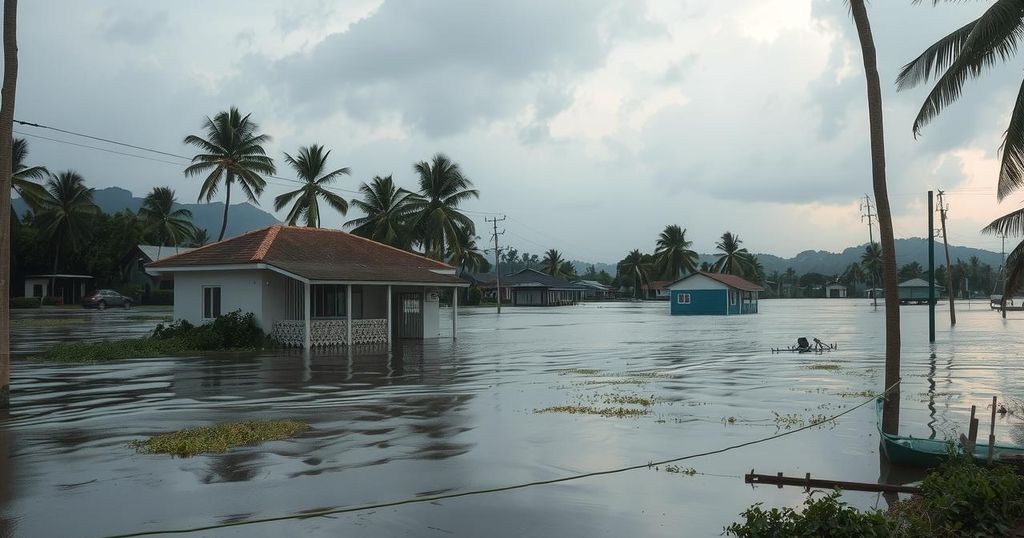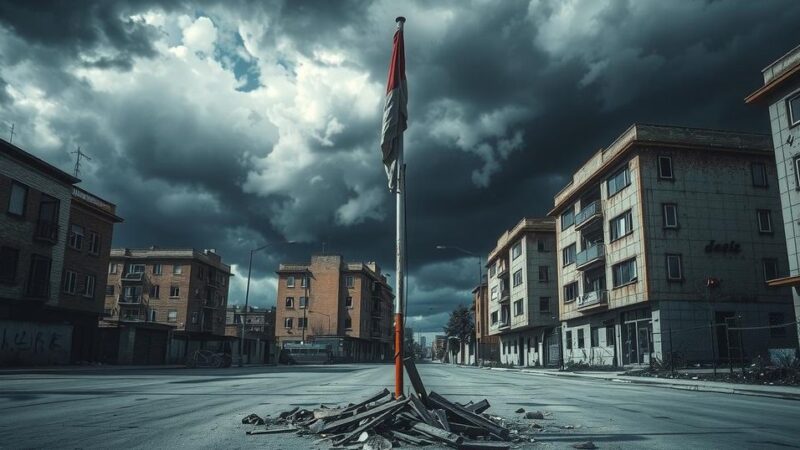Tropical Cyclone Kristine has resulted in the death of over a dozen individuals and affected more than a million residents in the northern Philippines due to catastrophic flooding and landslides. The storm prompted significant evacuations and rescue operations, especially as previous rainfall and cyclones increased vulnerabilities before Kristine’s arrival. Damage estimates remain pending, but are anticipated to be substantial.
Tropical Cyclone Kristine has wrought devastating consequences in the northern Philippines, resulting in the tragic loss of over a dozen lives and leaving others unaccounted for. The National Disaster Risk Reduction and Management Council (NDRRMC) reported that more than one million individuals have been affected by this cyclone, which has displaced thousands due to extensive landslides and torrential rainfall. The storm, officially designated as Tropical Storm Trami by the Joint Typhoon Warning Center, initially formed west of Guam and made landfall on Wednesday in the northern region of the Philippines. Preceding heavy rainfall, combined with the effects of earlier cyclones, exacerbated the risk of flash floods in affected areas, as government officials had warned. Numerous distressing reports emerged from regions hardest hit by the flooding, with photos and videos depicting residents standing in chest-deep waters while Coast Guard members utilized boats for evacuation efforts. Former Vice President Maria Leonor Robredo highlighted the severity of the situation in her social media comments, stating, “People have been stuck on the roofs of their houses for several hours now. Many of our rescue trucks have stalled due to the floods.” The Philippine Atmospheric, Geophysical and Astronomical Services Administration (PAGASA) indicated that certain areas could experience daily rainfall exceeding five inches, as the cyclone progressed east to west over the archipelago. Manila, the capital of the country with a metropolitan population nearing 14 million, was positioned on the edge of the storm’s moisture bands, making heavy rainfall inevitable. Although Kristine’s remnants are predicted to shift away from the region, the forecast still holds the possibility of ongoing rainfall, particularly as the country endures its rainy season. Currently, damage estimates have yet to be released by governmental authorities, but preliminary assessments forecast significant impacts, with numerous communities enduring severe flooding. As of now, the nation has encountered at least ten cyclones with two months remaining in the year. The anticipated season of activity still suggests a range of 13 to 18 cyclones under the agency’s watch.
The Philippines is geographically vulnerable to tropical cyclones, especially given its location along the typhoon belt in the Pacific. These cyclones frequently bring heavy rains, strong winds, and consequential flooding and landslides. During the months of June to November, the country typically experiences an uptick in cyclone activity due to the East Asian summer monsoon. Deliberate monitoring from the Philippine Atmospheric, Geophysical and Astronomical Services Administration (PAGASA) is critical for early warnings and disaster responses, particularly as the nation continues to face the impacts of climate change, which may intensify weather events. Tropical cyclones, like Kristine, pose serious challenges, particularly in areas that have not fully recovered from previous storms, often leading to compound disasters.
In summary, Tropical Cyclone Kristine has had a catastrophic impact in the northern Philippines, affecting over one million people and resulting in fatalities and significant displacement due to flooding and landslides. While the storm has moved on, the repercussions linger with expected continued rainfall complicating recovery efforts. Authorities are yet to ascertain the complete extent of damages, but early indications suggest that the effects will be profound, highlighting the ongoing challenges posed by tropical cyclones in the region.
Original Source: www.foxweather.com






